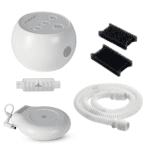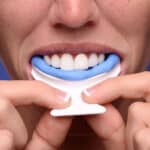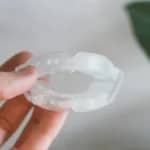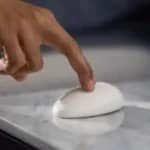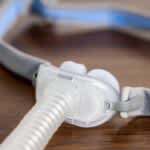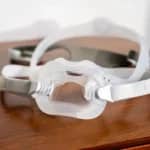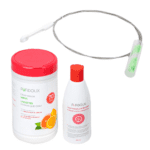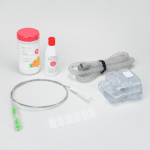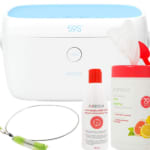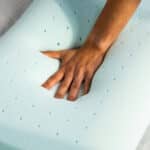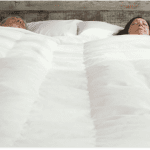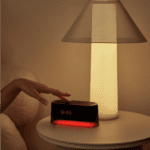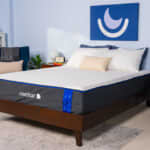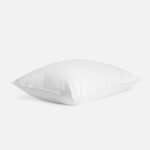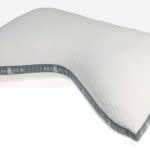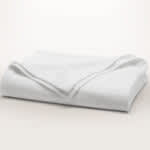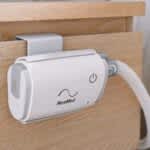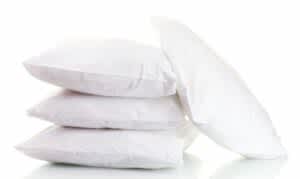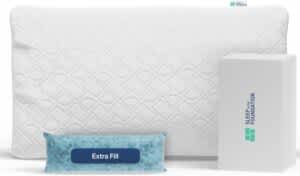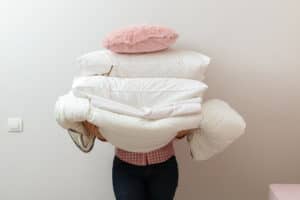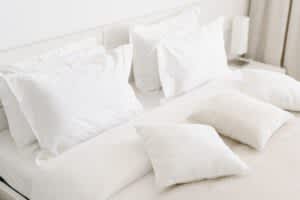Your pillows are mainstays of your bedroom, so it’s natural to want to keep them fresh, clean, and free of germs. But the right way to wash your pillows can depend on the material, type of pillow, and specific instructions from the manufacturer.
Beyond just removing stains and dirt, washing your bedding can keep allergens and germs out of your sleep environment. Besides collecting skin cells and dust mites, pillows can be magnets for bacteria, viruses, and fungi, so cleaning them is worth your while.
While laundering sheets and blankets tends to be a straightforward process, washing certain kinds of pillows can require more careful attention to avoid damaging them. Knowing how to wash them the correct way can keep your pillows fluffy, functional, and clean.
How to Clean Pillows
The correct way to wash a pillow depends on the material that it’s made of. In the United States, a bedding product like a pillow must include a label that lists all of the product’s material contents. In many cases, the label also tells you how to wash the pillow. When in doubt, check your pillow’s label for laundering instructions.
There are a few common methods for washing pillows.
- Machine-wash: This means that you can place your pillow directly in a washing machine with detergent. The instructions may say to wash the pillow in hot, warm, or cold water. When the label does not specify a water temperature, it’s fine to use hot water.
- Hand-wash: Instead of tossing these pillows in the washing machine, give them a gentle laundering in a sink or basin, using your hands to rub in and rinse out the soap or detergent. Use cold or warm water, depending on the label’s instructions.
- Dry-clean only/professionally dry-clean: The dry cleaning process uses chemicals and a special machine to remove dirt from fabric.
- Damp-wipe only/spot-clean: To clean these pillows, lightly wipe the surface with a moist rag or sponge instead of immersing the pillow in water.
How to Wash Throw Pillows
Wash decorative accent or throw pillows about every three to six months. Most throw pillows consist of a soft interior portion inside a cover. The laundering method you should use depends largely on the cover’s material.
If the label on your throw pillow says that the cover is machine-washable, launder it with similar colors on the delicate cycle of your washing machine. Use warm water unless the label specifies another temperature.
If there is no label specifying how to wash the throw pillow cover or what the pillow is made from, you’re better off washing it by hand using a simple multi-step process:
- If necessary, spot-treat any obvious stains on the cover.
- Fill a basin or sink with warm water and a mild detergent.
- Let the cover soak for a few minutes before lightly massaging out any dirt with your hands.
- Rinse the detergent off the pillow and allow it to air-dry.
Some throw pillow inserts are also machine-washable on a gentle cycle. If your pillow’s insert is made of foam, or if the insert can’t be separated from the cover, spot cleaning is likely to be the safest option.
You can also take your throw pillows to a professional dry cleaner and ask if they have products to clean them without causing damage.
How to Wash Down Pillows
Cleaning guidelines for down and feather pillows vary, so check your pillow’s label before getting started. Some must be dry-cleaned, while others are machine-washable. However, even machine-washable down pillows must be cleaned in a particular way to avoid damaging the feather fill.
Some manufacturers discourage laundering feather or down pillows altogether because washing can remove the natural oils in feathers that help the pillow stay fluffy.
Down and feathers must also be thoroughly dried to prevent mold from growing inside the pillow. However, it’s hard to know for certain when a down pillow is completely dry, which poses an extra challenge in washing these pillows.
If the label on your down or feather pillow says it is machine-washable, carefully follow the instructions below while accounting for any specific directions on the label:
- Use a small amount of gentle laundry soap or a detergent that is specifically made for washing down and feather products. Using too much detergent can cause residue to build up on the filling. Some pillow manufacturers advise against using soap at all.
- Wash the pillow on the delicate cycle, in warm or cold water.
- Use additional rinse and spin cycles to thoroughly remove any residue and water from the pillow.
- Dry the pillow on low heat for multiple cycles. Between cycles, fluff the pillow and use your hands to gently break up any clumps so that everything dries evenly.
How to Wash Foam Pillows
Laundering memory foam, whether in a washing machine or by hand, can damage the fill and flatten the pillow. Wet foam can also become moldy if it fails to dry out completely. It’s usually safest to spot-clean memory foam pillows or to remove and clean the cover separately.
Although most manufacturers warn against washing memory foam, some pillows that contain shredded foam can be cleaned by hand. If your foam pillow’s label says it can be hand-washed, follow these six steps in the cleaning process:
- Fill a sink or tub with room temperature water and a small amount of mild soap.
- Place the pillow in the water and soap.
- Softly massage the pillow in the soapy water.
- Drain the sink and refill it with warm water.
- Continue gently squeezing the pillow in the water until the water coming out of the pillow runs clear.
- Squeeze out as much water as possible from the pillow and allow it to air-dry.
Even if you can’t wash the whole pillow, you can often still launder a foam pillow’s cover in the washing machine. If your pillow contains shredded memory foam, have a bag ready to contain the fill when you take off the cover. Use the cold setting on your washer and allow the cover to fully air-dry before putting the foam fill back in.
How to Wash Pillows in a Washing Machine
Some pillows that are labeled as machine-washable don’t offer any specifics about the best water temperature, wash cycle, or drying process. If the tag doesn’t tell you how to wash a pillow in the washing machine, certain tips can help you safely get it clean.
- Spot-clean first: If your pillow has a stain, spot-treat it before you throw it in the washing machine. Cover the spot with a non-abrasive stain remover, work it into the fabric, and let it sit for a few minutes and up to a few hours. Then blot the stain with a wet rag before putting the pillow into the washer.
- Wash two pillows at once: Cleaning two pillows at the same time balances the washer load and helps keep the pillows from becoming misshapen.
- Wash pillows separately: Avoid washing your pillow in a load of other laundry. This can make your pillow lumpy, which may affect your ability to sleep comfortably.
- Go gently: Use a mild laundry detergent and set your washer to the gentle cycle.
- Use hot water: Hot water helps get rid of bacteria, dust mites, allergens, and other unpleasant things that could be lurking on your pillow and affecting your health.
How to Dry Your Pillows
How you dry a pillow depends on what it is made of, and using the wrong method can lead to damage. The tag on your pillow may mention one of a few common drying methods.
- Machine/tumble-dry: These pillows can go directly into a dryer. If the label doesn’t say to dry them at a particular temperature, you may be able to use the hot setting. However, to be on the safe side, you can dry them on a lower heat setting with a gentle tumble.
- Drip- or line-dry: Wet pillows should be allowed to dry naturally while laid flat or hanging from a clothesline.
- No heat: Place these pillows in the dryer so they can spin to dry without any extra heat.
In the dryer, adding dry towels along with the pillows can help the pillows tumble-dry faster. If you have to drip dry your pillow, try wrapping it in a towel before allowing it to air-dry. The towel will pull excess water out of the pillow, which can speed up the drying process.
Regardless of which method you use, it’s important to make sure that your pillow has completely dried out before using it. Even if it feels dry on the outside, the inner portion may still be damp. Allow plenty of time for your pillow to dry so that the process isn’t rushed.
How Often Should You Wash Your Pillows?
In general, cleaning experts recommend washing your pillows one to four times a year.
Some materials absorb more sweat or attract more bacteria and dust than others and may need to be cleaned more often. For example, many pillows made from synthetic materials need frequent laundering, but you might be able to clean memory foam pillows less often.
Pillow protectors may help keep your pillows cleaner for longer. With some types of pillow protectors, you may be able to significantly reduce how often you need to wash the pillow itself.
Pillowcases need to be washed much more often than pillows, usually about once a week. If you have allergies, it’s particularly important to wash your bedding often. Launder pillowcases in hot water to get rid of allergens and dry them on the hot setting, especially if you have a dust mite allergy.


